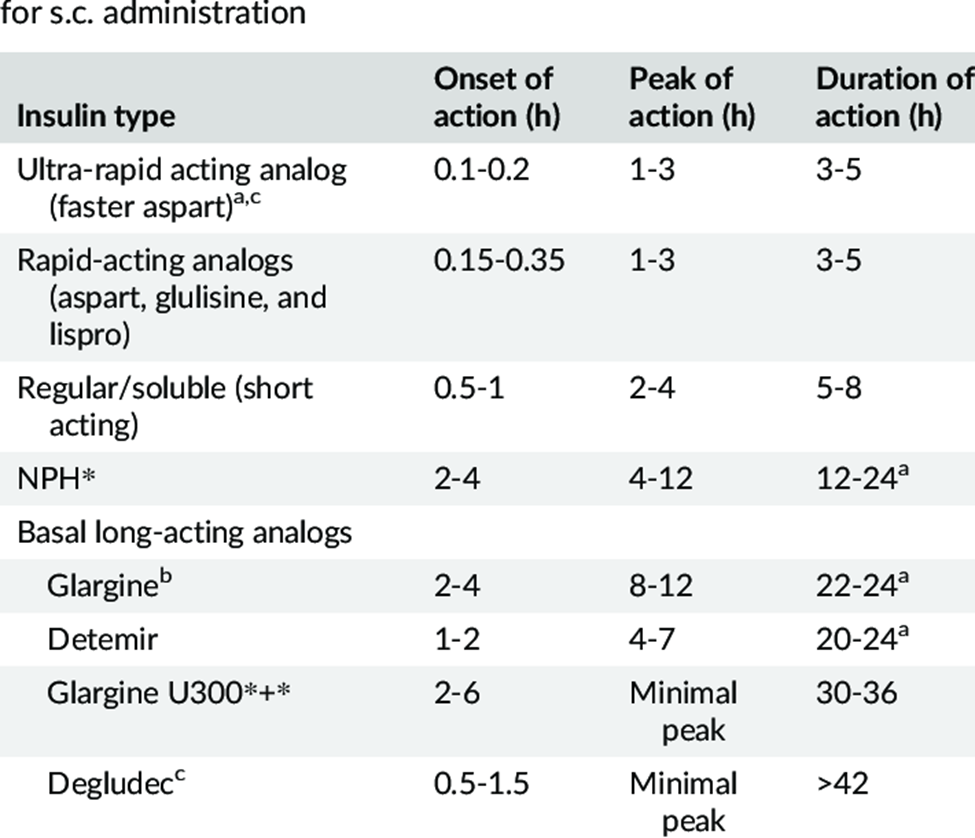A nurse is providing teaching for a client who has diabetes and a new prescription for Insulin glargine. Which of the following instructions should the nurse provide regarding this type of insulin?
Insulin glargine has a duration of 3 to 6 hr.
Insulin glargine has a duration of 14 to 22 hr.
Insulin glargine has a duration of 24 to 36 hr.
Insulin glargine has a duration of 6 to 10 hr.
The Correct Answer is C
A. Insulin glargine does not have a duration of 3 to 6 hours. This duration of action is much shorter than the actual duration of insulin glargine.
B. Insulin glargine does not have a duration of 14 to 22 hours. This duration is shorter than the typical duration of action for insulin glargine.
C. Insulin glargine, a long-acting insulin, has a duration of action that lasts approximately 24 to 36 hours. It provides a slow and steady release of insulin, offering a relatively consistent blood sugar-lowering effect over an extended period.
D. Insulin glargine does not have a duration of 6 to 10 hours. This duration is shorter than the actual duration of action for insulin glargine.

Nursing Test Bank
Naxlex Comprehensive Predictor Exams
Related Questions
Correct Answer is B
Explanation
A. "A weight reduction program will make me hypoglycemic.”
This statement suggests a misunderstanding. Weight reduction programs, when done appropriately, can contribute to better blood sugar control, but they should not necessarily lead to hypoglycemia if managed properly.
B. "I give the insulin injections in my abdominal area.”
This is the correct statement. Injecting insulin into the abdominal area is a common and recommended practice as it allows for consistent absorption and is a well-vascularized area.
C. “Insulin allows me to eat ice cream at bedtime.”
This statement suggests a misunderstanding. While insulin helps manage blood sugar levels, it should not be seen as a means to consume unlimited quantities of high-sugar foods, as a balanced diet is still crucial.
D. "I am to take my blood sugar reading after meals.”
This statement is partially correct. Blood sugar readings are often recommended before and after meals to assess the impact of food intake on blood glucose levels.
Correct Answer is A
Explanation
A. Tremors:
Tremors or shaking is a common symptom of hypoglycemia. When blood glucose levels drop too low, the body reacts by releasing hormones like adrenaline, leading to symptoms such as tremors, shakiness, and palpitations.
B. Bradycardia:
Bradycardia, or a slow heart rate, is not typically associated with hypoglycemia. Instead, hypoglycemia tends to stimulate the release of adrenaline, which can increase heart rate.
C. Vomiting:
Vomiting is not a classic manifestation of hypoglycemia. Nausea may occur, but vomiting is more commonly associated with conditions such as hyperglycemia or diabetic ketoacidosis.
D. Fruity odor on the client’s breath:
A fruity odor on the breath is more commonly associated with diabetic ketoacidosis (DKA) in individuals with diabetes mellitus, particularly when there is an accumulation of ketones in the body. It is not a typical manifestation of hypoglycemia.

Whether you are a student looking to ace your exams or a practicing nurse seeking to enhance your expertise , our nursing education contents will empower you with the confidence and competence to make a difference in the lives of patients and become a respected leader in the healthcare field.
Visit Naxlex, invest in your future and unlock endless possibilities with our unparalleled nursing education contents today
Report Wrong Answer on the Current Question
Do you disagree with the answer? If yes, what is your expected answer? Explain.
Kindly be descriptive with the issue you are facing.
